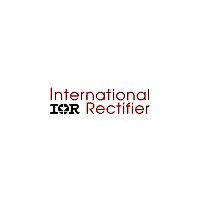IR3651STRPBF International Rectifier, IR3651STRPBF Datasheet - Page 16

IR3651STRPBF
Manufacturer Part Number
IR3651STRPBF
Description
IC CTLR PWM SYNC DC-DC 14SOIC
Manufacturer
International Rectifier
Datasheet
1.IR3651SPBF.pdf
(19 pages)
Specifications of IR3651STRPBF
Pwm Type
Voltage Mode
Number Of Outputs
1
Frequency - Max
460kHz
Duty Cycle
80%
Voltage - Supply
4.5 V ~ 13.2 V
Buck
Yes
Boost
No
Flyback
No
Inverting
No
Doubler
No
Divider
No
Cuk
No
Isolated
No
Operating Temperature
0°C ~ 125°C
Package / Case
14-SOIC (3.9mm Width), 14-SOL
Frequency-max
460kHz
Package
14-Pin SOIC (NB)
Circuit
Sync PWM Controller
Vcc (min)
4.5
Vcc (max)
13.2
Iout (a)
25
Switch Freq (khz)
programmable to 400kHz
Pbf
PbF Option Available
For Use With
IRDC3651 - KIT REF DESIGN SYNCH BUCK REG
Lead Free Status / RoHS Status
Lead free / RoHS Compliant
Available stocks
Company
Part Number
Manufacturer
Quantity
Price
Part Number:
IR3651STRPBF
Manufacturer:
IR
Quantity:
20 000
To cancel one of the LC filter poles, place the
zero before the LC filter resonant frequency pole:
Using equations (15) and (16) to calculate C
One more capacitor is sometimes added in
parallel with C
pole which is mainly used to suppress the
switching noise.
The additional pole is given by:
The pole sets to one half of switching frequency
which results in the capacitor C
For a general solution for unconditionally stability
for any type of output capacitors, in a wide range
of ESR values we should implement local
feedback with a compensation network (typeIII).
The typically used compensation network for
voltage-mode controller is shown in figure 15.
In such configuration, the transfer function is
given by:
The error amplifier gain is independent of the
transconductance under the following condition:
By replacing Z
transformer function can be expressed as:
H
12/07/2010
(
s
g
)
m
=
*
sR
Z
C
For
f
F
F
8
POLE
z
z
>>
(
C
=
=
1
F
4
75
0
1
P
F
=
4
+
in
.
P
75
<<
%
and R
π
C
and
and Z
V
V
=
3
F
*
*
e
o
2
)
LC
F
2
R
2
π
*
s
=
π
3
⎡
⎢
⎣
*
3
1
(
*
f
1
1
g
1
. This introduces one more
R
1
according to figure 15, the
F
L
+
1
m
3
+
+
o
s
−
sR
*
*
*
sR
−
1
g
C
C
g
C
Z
C
3
4
m
1
o
4
m
3
in
⎛
⎜ ⎜
⎝
C
+
4
Z
*
Z
C
C
>>
C
4
C
IN
≅
f
POLE
4
* )
4
POLE
POLE
-
+
*
π
1
-(16)
[
C
1
C
*
:
3
3
+
R
1
⎞
⎟ ⎟
⎠
sC
3
⎤
⎥
⎦
-
*
( *
-(17)
7
F
(
1
s
R
+
8
4
sR
+
.
R
10
10
C
)
7
]
)
H(s) dB
As known, transconductance amplifier has high
impedance (current source) output, therefore,
consideration should be taken when loading the
error amplifier output. It may exceed its
source/sink output current capability, so that the
amplifier will not be able to swing its output
voltage over the necessary range.
The compensation network has three poles and
two zeros and they are expressed as follows:
Cross over frequency is expressed as:
F
F
F
F
F
Fig.15: Compensation network with local
Z
P
P
P
1 z
z
2
1
2
3
IN
Gain(dB)
=
=
=
=
=
F
R
feedback and its asymptotic gain plot
0
2
2
2
2
o
C
10
π
π
π
π
=
7
*
F
*
*
*
R
R
C
Z
R
R
1
3
V
1
1
3
7
*
10
3
O
C
⎛
⎜ ⎜
⎝
*
( *
R
1
R
1
*
C
C
C
7
8
9
C
R
*
4
4
4
F
7
8
V
+
V
*
Z
osc
V
+
C
in
C
2
Fb
REF
R
3
3
*
10
⎞
⎟ ⎟
⎠
2
)
π
≅
≅
IR3651SPBF
*
2
R
1
L
2
π
3
F
o
E/A
π
P
*
*
2
C
*
R
1
C
o
1
C
3
7
*
3
*
C
R
F
3
C
8
P
Comp
3
4
Frequency
Z
Ve
f
16











